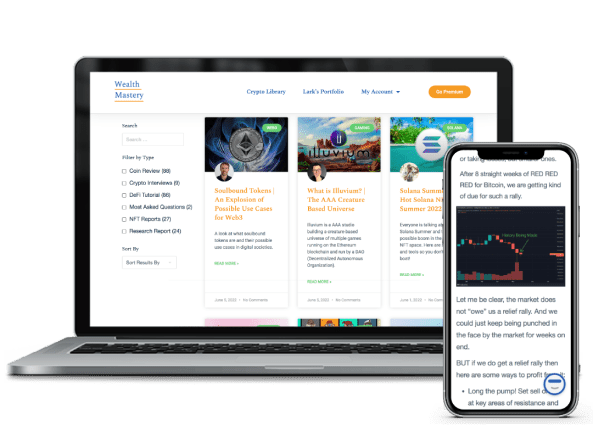Solice Interview & Aleph Zero Deep Dive
In This Issue
Lark interviews the team from Solice and Matt talks about the new kids on the blockchain, Aleph Zero, a new DAG based consensus protocol with scalability.
Solice Interview
For anyone not familiar, what is Solice?
Solice is a cross-platform VR Metaverse built on the Solana blockchain. We want to bring all users and players together in one universal environment where they can communicate and socialize with each one and other, breaking the barriers of e.g. PC<>iOS<>Android.
Our goal is to deliver a high-quality immersive experience by providing the users an environment where users can play, build, own, socialize and monetize their virtual experiences across multiple platforms that also support the player-centric ecosystem.
What does the SLC token do?
So the Solice token will become a universal token for the metaverse, everything possible trade within the metaverse and on our own marketplace will require our token. Other than that, When we are releasing new assets in the metaverse, like a new avatar, pets, lands or anything else on our own platform, it will only be able to be purchased with our token.
Another very important utility would be staking, users can stake their tokens within the metaverse for example on their lands or pets to receive not just base APY but also a chance to obtain rare loot and materials like rare gemstones and other resources.
And like most of the projects out there, the Solice token will also act as a Governance token in the future, where token holders later can propose new ideas and vote on them to decide what kind of contents they want to see in the metaverse, or what the priority should be on the roadmap.
What staking or farming opportunities currently exist for investors?
We had our Genesis staking event before, which was a locked staking for a limited time. That specific staking program was set up to incentivize our early supporters and to select our first group of dedicated user base.
At the moment, there are two Liquidity Farms available on Orca and Raydium. However, in the long run, we will have our own staking mechanism that offers users not just APY token rewards, but also in-game assets in the forms of NFTs. Users will be able to stake tokens in combination with their NFTs to receive more scarce and rare rewards which can be used for in-game utilities, or for investors to have it as a value retaining investment or collectible.
Though we did receive a lot of requests recently again for another single sided staking program, so the team will be looking to launch a new program to serve the communities and supporters before we have our original staking live.
Why did you choose to build on Solana?
For us, it was important to have a network that was able to handle mass transactions in a secure and fast way, far out on the market at that time, Solana was a no-brainer with their performance, TPS, and community. Also because we were more familiar with the ecosystem and the community on Solana itself, we were highly convinced that Solana would be the better fit and will have the best synergy with the project when we are building 3 – 5 years into the metaverse.
How will you use NFTs?
So there are going to be different types of NFT’s, like Avatars, Lands, Pets, Resources etc.
Each one will have its own utility and feature, obviously, Avatar represents the users in the metaverse, each one is unique. Land gives the ownership of the lands and the users will be able to build on stake on their lands. Pet’s – similar to lands will give the users the ability to stake and offer eggs as special reward etc. We will have more details regarding those NFT’s on our documentations: https://docs.solice.io/
Who are your biggest partners and what do they bring to the table?
For partners and investors, we actually have a quite big list, I think aside from the known figures and VC’s like Three Arrows Capital, Alameda Research Etc. We also work closely with various other metaverse, gaming, infrastructure(like payments and MarketPlace) projects and gaming guilds, both start-ups and established parties. We were able to leverage each other’s community, insights and tech to stimulate & support each other to have a positive impact and grow together and expand the web3 & metaverse adoptions.
What comes next for Solice?
We are doing our very first NFT sale for our genesis avatar collection where we launch around 700 3D animated models that will be representing users inside the metaverse. After the avatar sale, we will be conducting the highly anticipated land sales which we will reveal the rules and tutorial later on our medium and other social platforms.
For developments on the actual metaverse, we recently onboarded a lot of people and studio’s to work on the product. We are redesigning the in-game map/world, the environmental buildings and vibes. Mini-games for socializing and testing the transactions and pointing systems for security reasons (before we translate and launch games that actually involve tokens).
New Kid on the Blockchain by Matt
Aleph Zero is a peer-reviewed DAG-based (Directed Acyclic Graph) consensus protocol that is scalable, super-fast, and developer friendly. It aims to solve the key issues of security, scalability, and decentralization (The Blockchain Trilemma) and plans to enable privacy-enhancing features based on SMPC (Secure Multi-Party Computation) research and ZKPs (Zero-Knowledge Proofs). Aleph Zero was built for enterprise, Web 3.0 and will be suitable for a broad range of DeFi (Decentralised Finance) use cases.
The difference between a DAG and a blockchain lies inside the blocks. With Aleph Zero, there’s a DAG-based Proof-of-Stake consensus protocol. In blockchain, it’s called Nakamoto consensus, and it’s based on PoW (Proof of Work) which adds latency to the network in order to ensure it is synchronized and resilient to most attacks. However, in a DAG-based protocol this energy-consumption and heavy computing is completely unnecessary. The new transactions are validated by the previous ones. No mining is required.
A DAG protocol like Aleph Zero has many advantages over traditional, PoW blockchains. It produces the consensus much faster than a blockchain and as a result, it’s able to maintain fast transaction speeds even when operating on a high scale, something that Bitcoin’s blockchain could not achieve for example.
Key features of the Aleph Zero protocol include:
- Proof-of-Stake.
- Private smart contracts.
- Near-free transactions ($.0003) with up to 100,000 transactions per second and a 1 second block confirmation time.
- Application syncing to Aleph Zero through Hub & Spoke Operations model.
- Privacy enhanced features via SMPC and ZKPs (building in-house and known as Liminal).
- Decentralized, cloud file storage (integration with the Interplanetary File Storage – IPFS).
- AZERO wallet
- A DEX & Decentralized Dark Pool (building in-house and known as Common).
- Oracle.
- Native stablecoin to power the DEX.
- Cross-chain bridge (building in-house).
Aleph Zero is a comprehensive blockchain project comprising multiple elements, making it one of the most ambitious projects in crypto. The broader elements of the network come from Parity’s Substrate stack and the mainnet was launched on November 10, 2021.
Development on the network is beginning to take shape with the launch of ‘Smartnet’ on January 28, 2022. This is an experimental smart contract network which allows dApp developers to begin deploying smart contracts on top of Aleph Zero. The testnet gives teams the opportunity to battle-test their smart contracts before they go live on the network.
Aleph Zero has already inked a partnership with Nigerian based Flidy Technologies which is a local start-up incubator with plans to fund up to twenty Web 3.0 start-ups using Aleph Zero infrastructure over the next 2 years.
Gatenox, a new-generation identity wallet, will also be building on Aleph Zero. Gatenox aims to become a go-to decentralized identity wallet for exchanges, fintech companies and banks.
The Team & Backers
The team is mainly based in Switzerland and comprises of approximately 30 personnel, many of whom have brilliant academic success stories. For eg. Matthew Niemerg (Co-Founder) is a Simons-Berkeley Fellow, and an IBM Center of Excellence Fellow in High Performance Computing with comprehensive DLT experience. The research and development team behind the technology is Cardinal Cryptography based in Krakow, Poland.
VC investors include Jun Capital, Genblock Capital, Master Ventures, and Petrock Capital.
Coin Utility
$AZERO is the base currency that powers the Aleph Zero ecosystem.
- Users get discounts on swap fees on the Decentralized Exchange (DEX).
- Users get discounts on fees for asset-wrapping and use of Liminal bridge.
- $AZERO will be used as collateral for wrapped assets in Liminal.
- $AZERO will be used for validator node staking.
Tokenomics
Aleph Zero is headquartered in Switzerland and from a regulatory perspective the SFMSA (Swiss Financial Market Supervisory Authority) classified Aleph Zero’s business model as compliant under Swiss law and that there were no special authorisation requirements regarding the issuance of the $AZERO coin. Consequently, Aleph Zero conducted pre-seed, seed and public sale rounds in 2021 with prices ranging from $.04 to $.10 per coin. The total raise was $14.8 million.
At launch in January 2022, 180 million coins were in circulation out of a maximum supply of 300 million. It should be noted that there will be an additional 30 million coins minted annually, 90% of which will be offered as staking rewards for validators/delegators (coming soon) and 10% will be retained in a Treasury for ecosystem development.
In closing, although the project has been in development for the past 4 years, it’s fair to say that Aleph Zero is just getting started with the recent launch of their mainnet and the deployment of their SmartNet testnet. It will clearly take them some time to roll out their suite of products, build out an ecosystem, and achieve the beginnings of adoption. There’s also the fact that the $AZERO coin can only be purchased on one exchange at the moment (MEXC Global).
However, we have seen that patience with other Layer 1 projects has been very lucrative for early investors with the likes of Fantom, Avalanche, Solana and Near Protocol emerging over the past year or so, each with market capitalisations that run into the billions. So, it’s worthwhile keeping a close eye on potential newcomers such as Aleph Zero, a protocol that despite a successful launch during a bear trend, has a current market capitalisation of just $220 million.
Follow Matt
Twitter @buyzeedips
Youtubehttps://youtube.com/c/CryptoBadgers
Final Notes
Thank you so much for your support, and I truly hope that today’s issue will give you insights needed to help you master your wealth.
If you are reading this it means you are on the free version of the Wealth Mastery Investor Report, which is great for news and tips on the crypto markets.
If you really want to take advantage of fastest growing asset class EVER, I highly recommend you join us in the Premium Investor Report.
You’ll immediately get access to:
- Deep dive Altcoin report & The Trending Coin Report
- Technical Analysis on the crypto large caps and overall market
- Token sales, Airdrops and DeFi Tutorials
- Updates on the NFT Ecosystem and new mints
- My Investment Portfolio Updates
See you next time!
Lark and the Wealth Mastery Team
Legal Disclaimer
TCL Publishing ltd (director Lark Davis, owner of Wealth Mastery) is not providing you individually tailored investment advice. Nor is TCL Publishing registered to provide investment advice, is not a financial adviser, and is not a broker-dealer. The material provided is for educational purposes only. TCL Publishing is not responsible for any gains or losses that result from your cryptocurrency investments. Investing in cryptocurrency involves a high degree of risk and should be considered only by persons who can afford to sustain a loss of their entire investment. Investors should consult their financial adviser before investing in cryptocurrency.




